Cameras can’t get more classic than a pinhole, unless of course that pinhole camera also has a set of bellows. The Jollylook Pinhole is a wooden camera that artists can build themselves. Once constructed, the Pinhole uses Instax Mini instant film and runs on human hands, not batteries. Despite the modern Instax inside, the bellows give the Pinhole an unmistakably classic design.
The Jollylook Pinhole, or at least the pieces to construct it, is made by a small company previously based in Ukraine. After raising just over $74,000 on a Kickstarter launch, the Jollylook Pinhole is available for pre-order for $109. I experimented with an assembled Jollylook Pinhole to see if the camera works as beautifully as it looks in the pictures.
Editor’s Note: I tested a fully assembled Jollylook Pinhole; I wasn’t able to build this myself because of limited kit availability pre-launch. This review is on the camera itself, not the building process.
The Big Picture
Pros
- Beautiful wood construction
- Fully manual with no batteries
- Simple design
- Really fun to shoot with
- Excellent learning tool
- Lots of pinhole character
Cons
- Viewfinder isn’t always accurate
- Some prints have lines from the roller
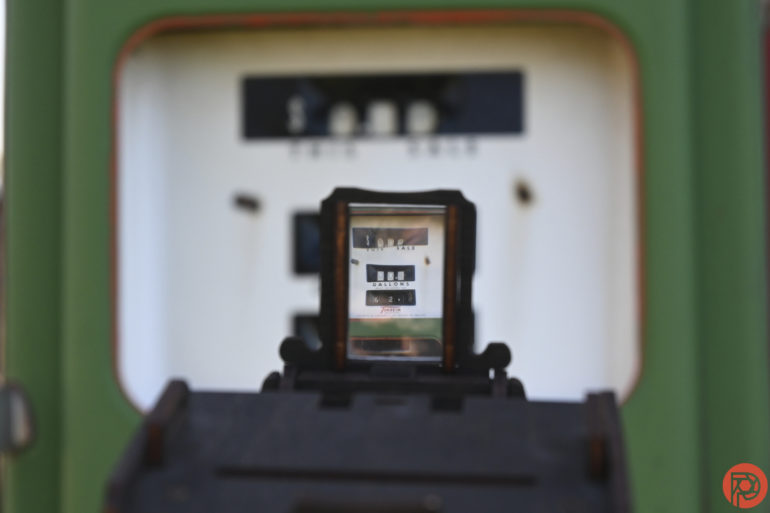
The Jollylook Pinhole is a great tool for learning how a basic camera works by building one yourself. The camera feels and looks wonderful, taking inspiration from folding bellows cameras. Images have plenty of pinhole character, with an overall softness and cool tones.
If you’re looking for sharp images with more accurate colors, an Instax camera will get better results. As a DIY camera, the Pinhole is more of a learning tool than the party favorite Fujifilm Instax cameras. The Jollylook Pinhole has some disappointing lines in the images due to the pressure the roller puts on the images. And the viewfinder also isn’t perfectly accurate.
For artists looking to build their own camera, the Jollylook Pinhole offers beautiful build and simple operation. On the flip side, the roller lines, patience, and experimenting required may discourage others.
I‘m giving the Jollylook Pinhole four out of five stars.

Gear Used
I used the Jollylook Pinhole with Fujifilm Instax Mini film and the Manfrotto Befree tripod.
Innovations
The pinhole camera has been around for hundreds of years. The Jollylook Pinhole doesn’t reinvent the wheel but makes pinhole photography easily accessible for modern photographers. It uses the easy-to-find Instax Mini film; there’s no darkroom required. The Jollylook is also designed to be a learning tool, allowing photographers to build their own camera.
Ergonomics
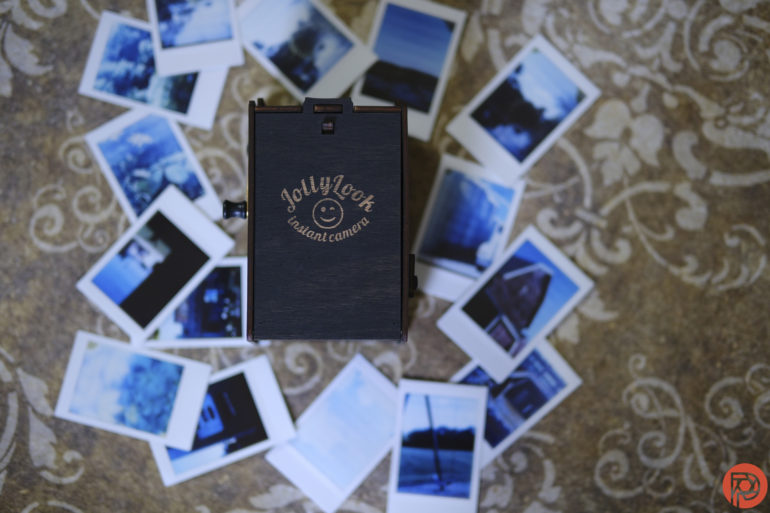
The Jollylook Pinhole takes obvious inspiration from classic bellows cameras. For transport, the Jollylook Pinhole folds down into a simple box. Pulling a small wood lever releases the front panel. A lever at the side then releases the bellows.
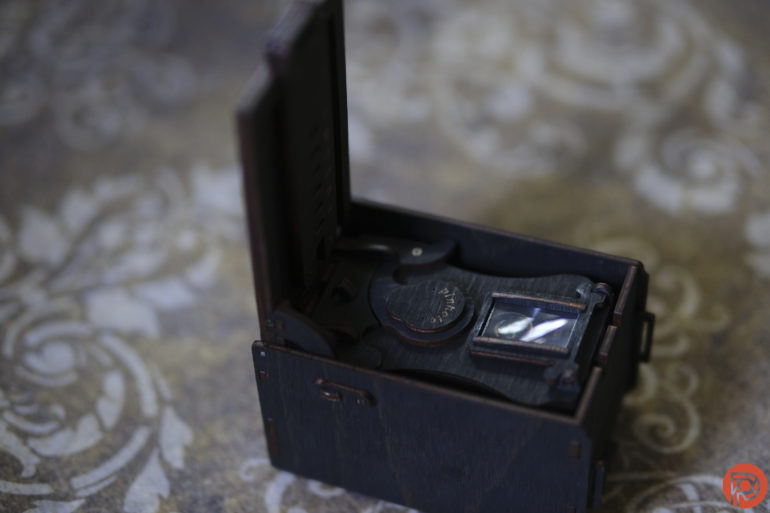
The unfolded front panel allows the camera to adjust the focal length by moving the bellows in and out. A small lever at the bottom frees a peg that sits in the notches for each different focal length. The lever occasionally gets stuck and requires some finesse to adjust. I found that pushing the front back first, then forward, was the easiest way to adjust or fold the bellows.
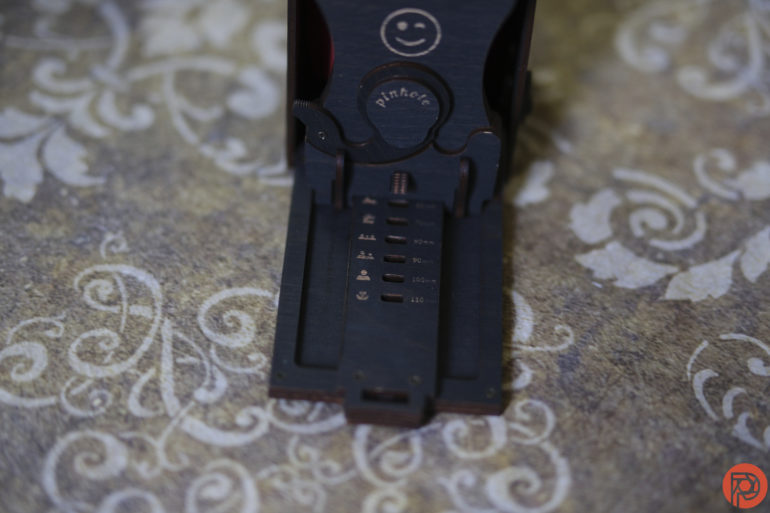
A simple Fresnel viewfinder piece pulls up at the top of the front panel to assist with framing. The shutter is a simple lever piece; pushing it down at the side opens the cover over the pinhole.
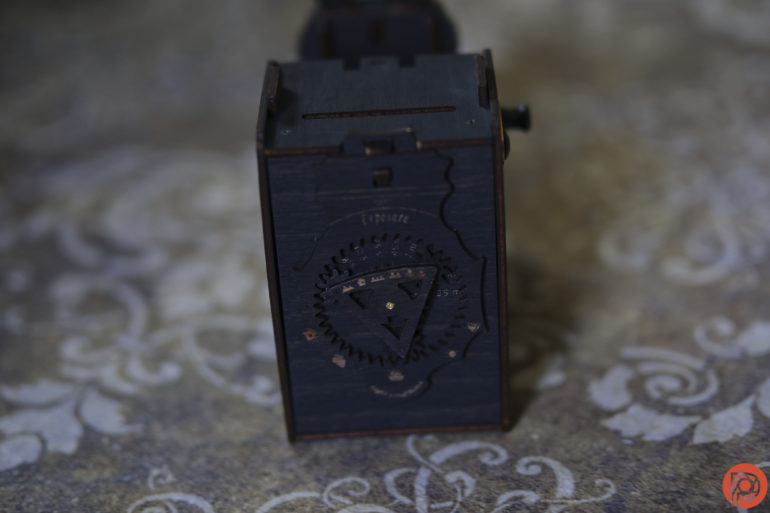
How long should that cover remain open? A clever exposure calculator sits at the back of the camera. It’s a triangle with small gears on each corner that sits inside a larger gear. Turn the arrow to the current lighting condition, find the symbol for the current focal length, and you’ll see the suggested exposure time: from half a second to 25 minutes.
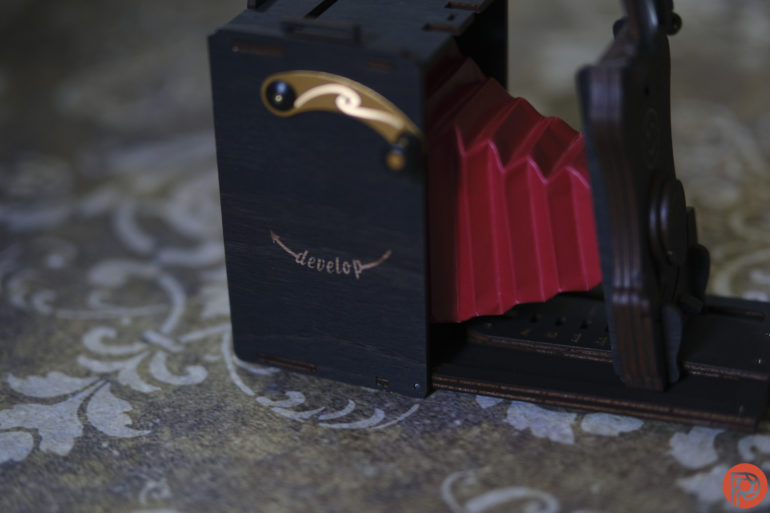
The back pops open to insert Fujifilm Instax Mini film. Inside the camera, you can see how simple the camera really is — there’s just the pinhole sending light to the film. At the side, a crank churns out the Instax after exposure. It pops out of a hole in the top.
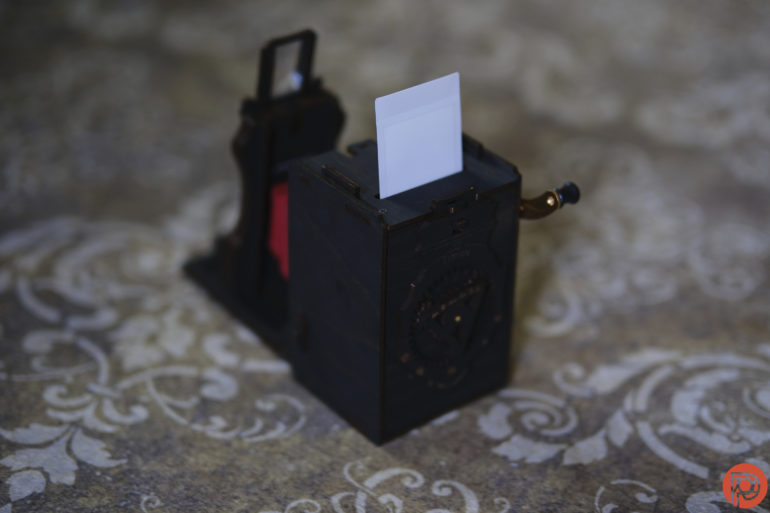
Pinhole cameras, by nature, need longer exposure times. The box shape makes it easy to place the Jollylook Pinhole on a tabletop. Or, you can use the tripod thread at the bottom.
Build Quality
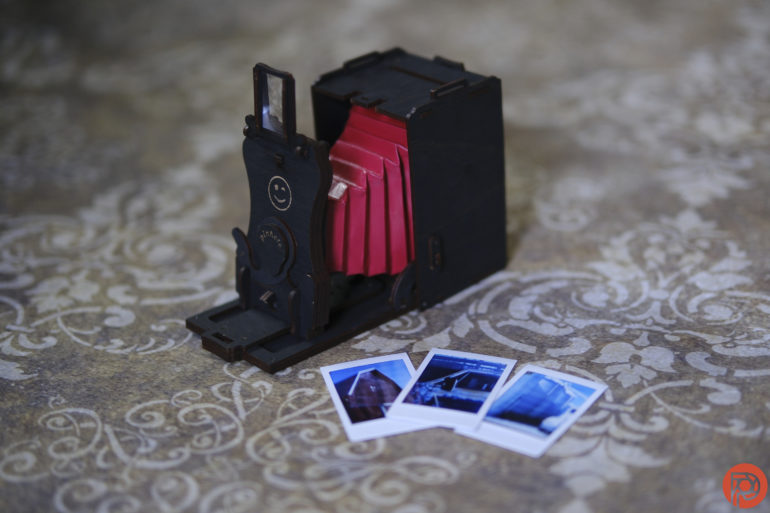
One of the criticisms of the very first camera from Jollylook was the cardboard construction. The Jollylook Pinhole steps up to really lovely wood construction. It’s made with thin natural fiber wood panels. The camera feels great in the hands and should last longer than its cardboard cousin. I don’t think the wood would survive a fall off of a tripod, but it should hold up to normal use.
The bellows are made with a thinner material (probably cardboard) but it does have a nice pleather-like feel to it. The winder is metal and plastic. There are several screws in the construction and it isn’t built with glue.
Jollylook is also working to make the Pinhole eco-friendly. The wood the camera is made of is biodegradable. That’s good news for the earth, but maybe not so good if you planned to hand this camera down to your great, great grandkids.
Ease of Use
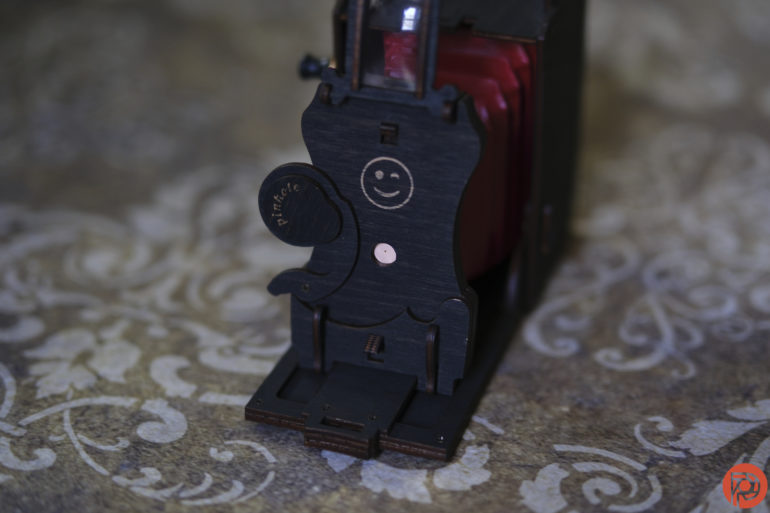
The pinhole is the most basic camera type. Learning how to use one is a great exercise in the founding principles of photography. Everything is manual here, from the shutter that you open and close yourself to the hand crank to spit out the film. I watched a YouTube video to learn basic steps like loading the film. I tested a fully assembled version, so I can’t speak to the DIY process of building the Jollylook Pinhole.
While operating the Jollylook Pinhole is relatively simple, getting great results isn’t as straightforward. Flipping the shutter open and closed without moving the camera is difficult. Softness is a classic piece to the look of a pinhole. But, the shutter has to be opened and closed with care if you don’t want to exaggerate that blur.
The viewfinder is also more of an approximation than a true visual. I had a few shots where I shot too low and others where I thought I was shooting over the fence and ended up with a bar in the bottom of my shot.
Ultimately, the odds are that you aren’t going to love every single image in that pack of ten Instax shots. If the cost of Instax film concerns you, or you want something easy to get good results every time, get on of Fujifilm’s Instax cameras instead. But, if you want to experiment and play, then the Jollylook Pinhole easily fills that role. It’s fun to experiment with; just expect those experiments to waste half the film.
Metering
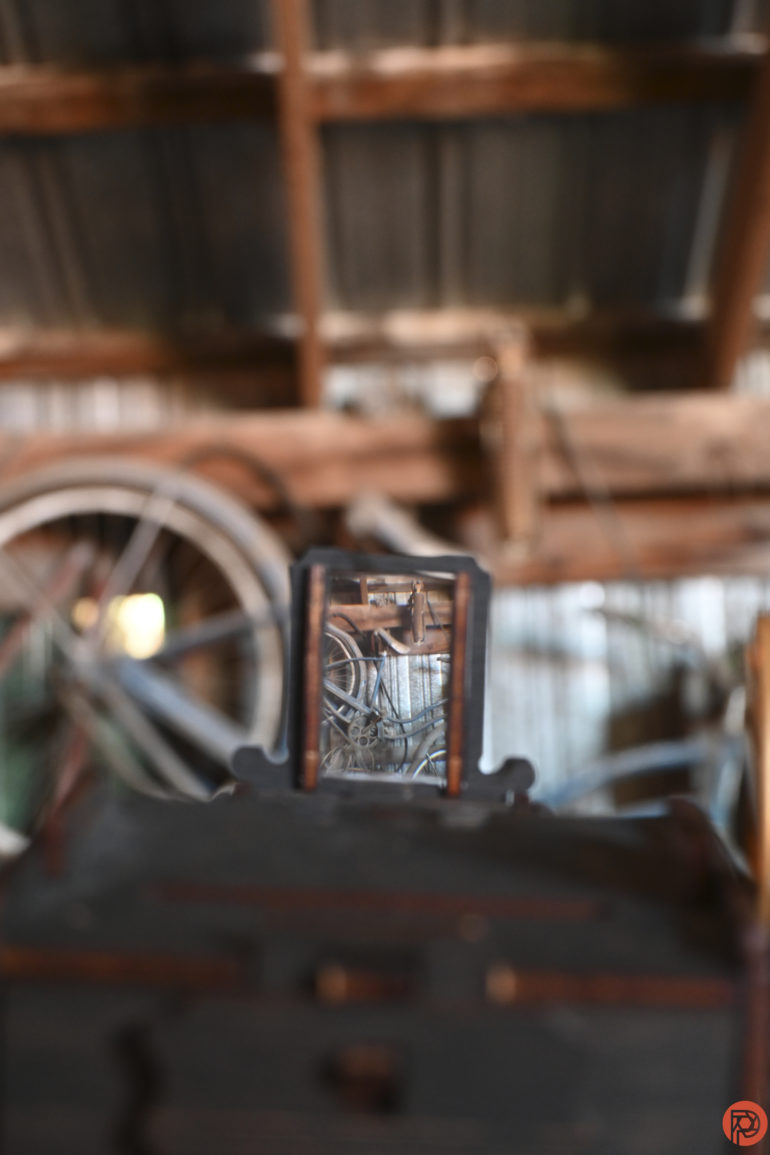
The other half of the challenge is getting good exposure. The exposure calculator is a huge help, but there is much room for error. At the widest view and sunniest conditions, it’s difficult to limit the exposure to half a second — you have to be quick on that shutter lever. There’s also a lot of room for variance. The exposure calculator, for example, lists weather conditions but not time of day. It’s also tricky to start a timer at the same time, if you want to be really precise about it. I had a lot of overexposed images at noon on a sunny day.
Image Quality
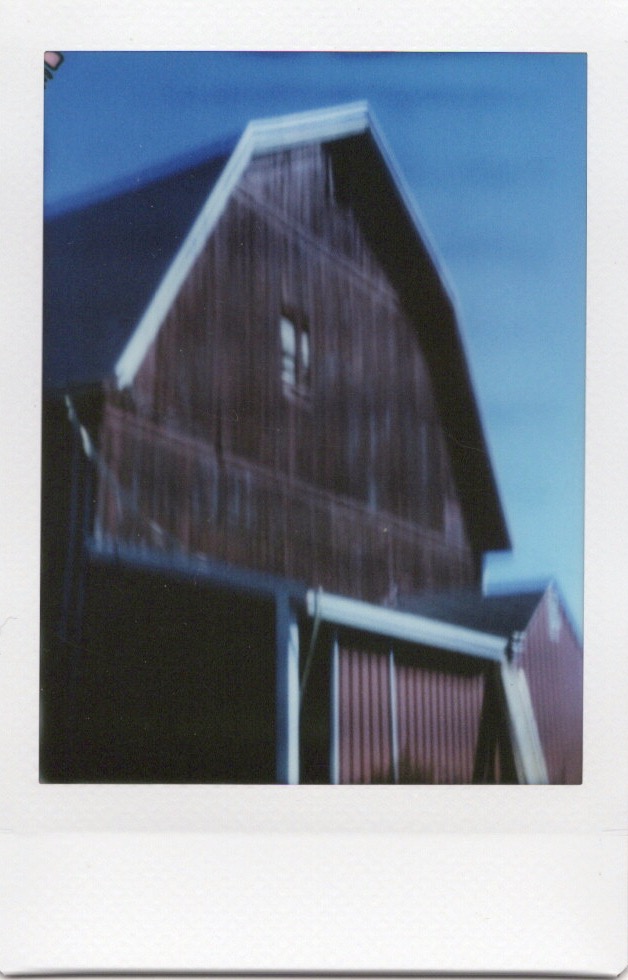
Pinhole cameras embrace imperfection — and there’s a lot of it to go around here. Images have the classic softness that comes from using such a tiny aperture. Using a fully manual shutter without moving the camera is difficult to do, so that adds a bit to the soft look.
The lens also affects image quality, and the pinhole’s lack of actual glass plays a role in creating that classic pinhole look as well. Colors are less saturated than images from an Instax camera using the same film. The images also favor more cool tones.
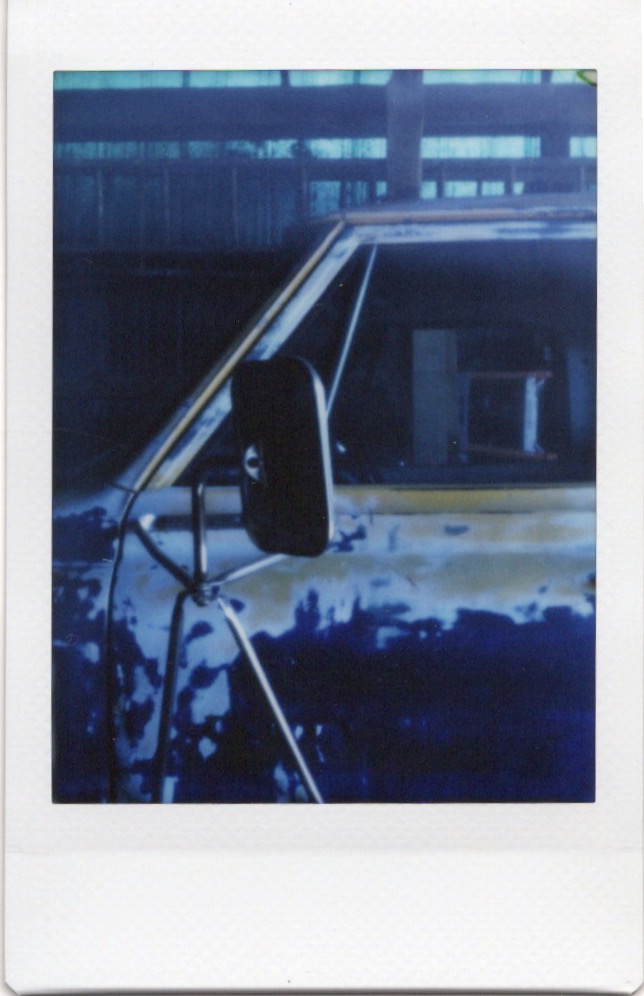
Those features really give the images the character of a pinhole. No one buys a pinhole for perfection. The look worked well when photographing vintage items like old barns and trucks.
However, the images do have one flaw that doesn’t really build character, in my opinion. The Instax prints come out with lines through them. This is likely from the roller inside the Jollylook. When the instant film has uneven pressure applied, the film emulsion chemicals aren’t uniform and you end up with lines going through the images. These lines are most noticeable through the highlights, such as the sky. They do fade a bit, even after the initial 90 seconds developing that Instax is supposed to take. I tried pressing both sides of the print before it developed, but I did still end up with lines. The sample images on the camera’s Kickstarter page also have these faint lines.
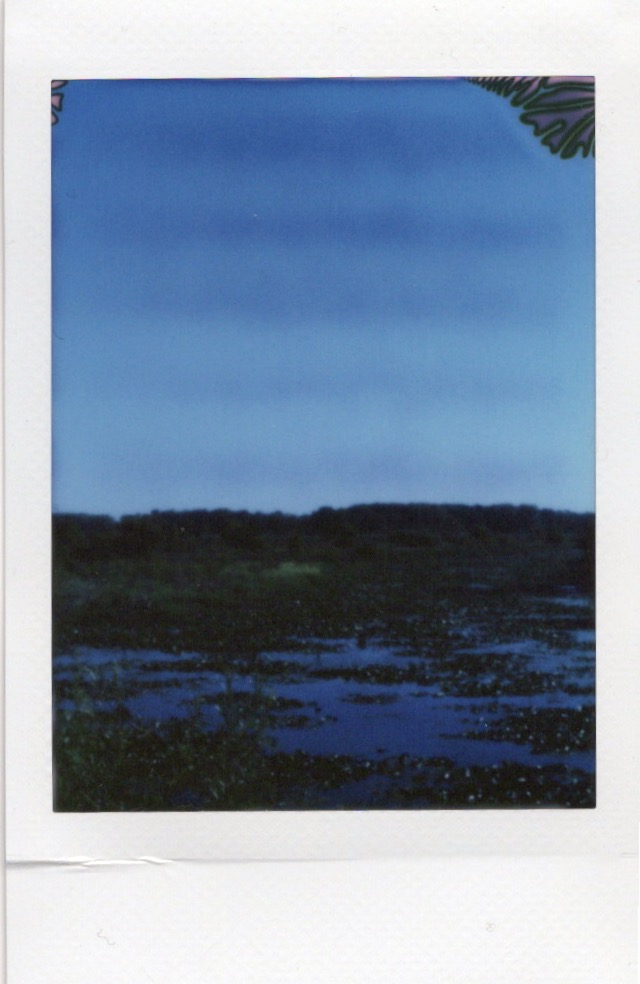
I did experience one other error where some corners have a leak that at times resembles a tropical palm leaf. But, I suspect that’s more of a fault with the film, not the camera itself.
Ultimately, there’s a ton of character to be had here — and pinholes are never the camera of choice for pixel peepers.
Extra Image Samples
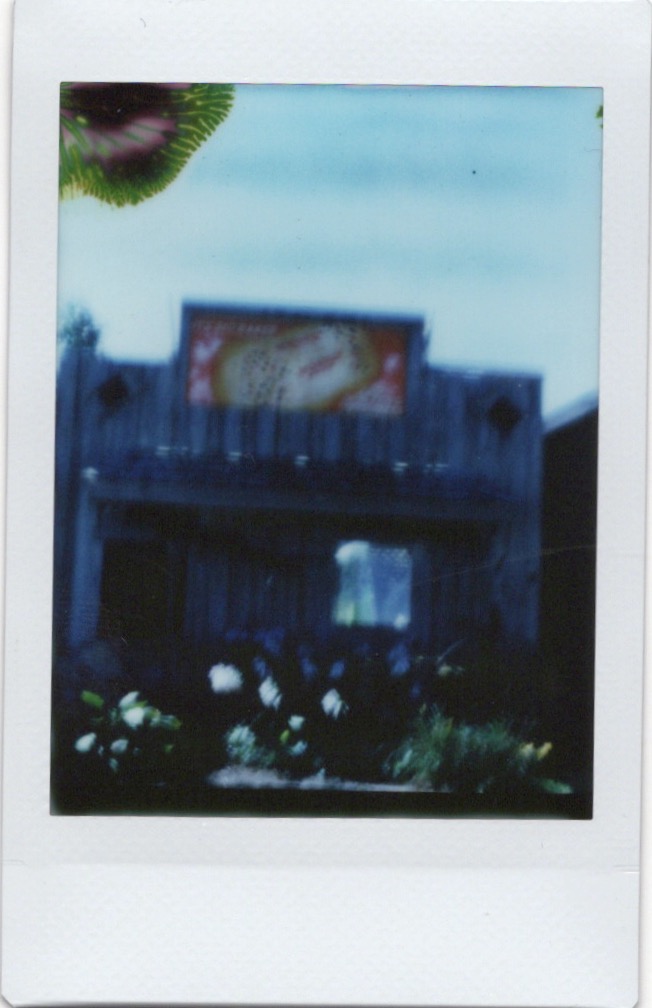
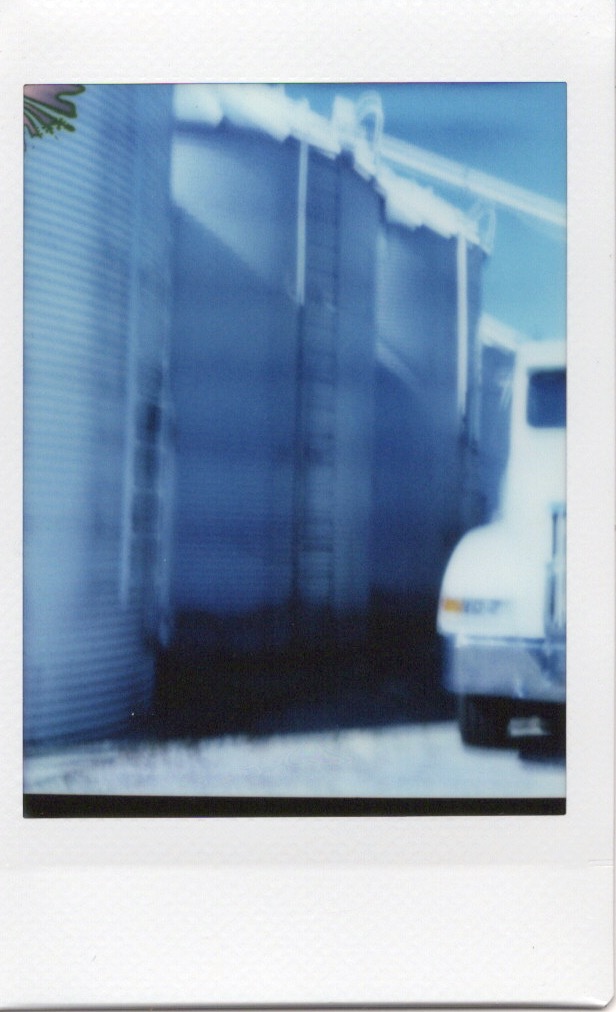
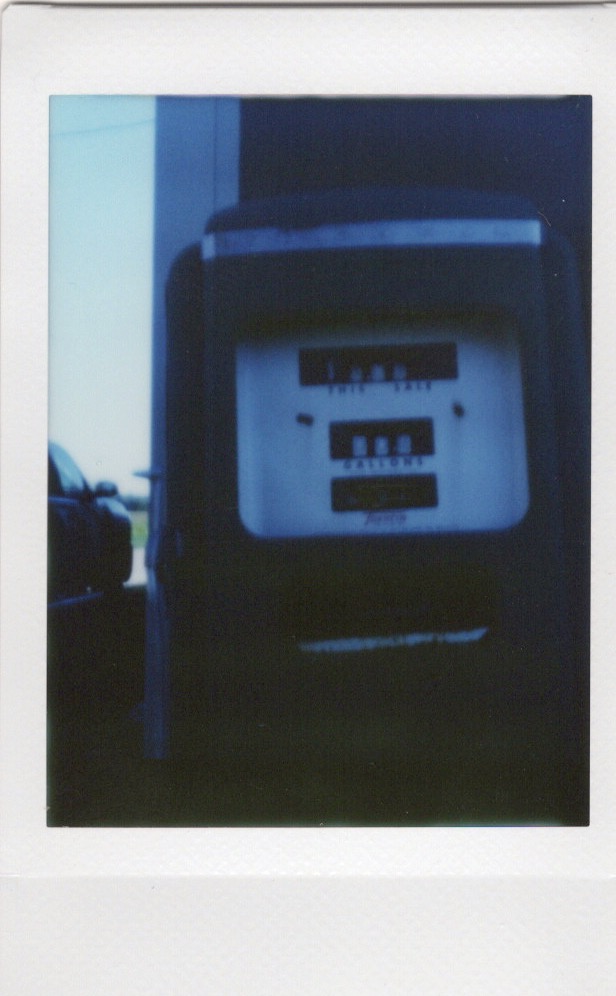
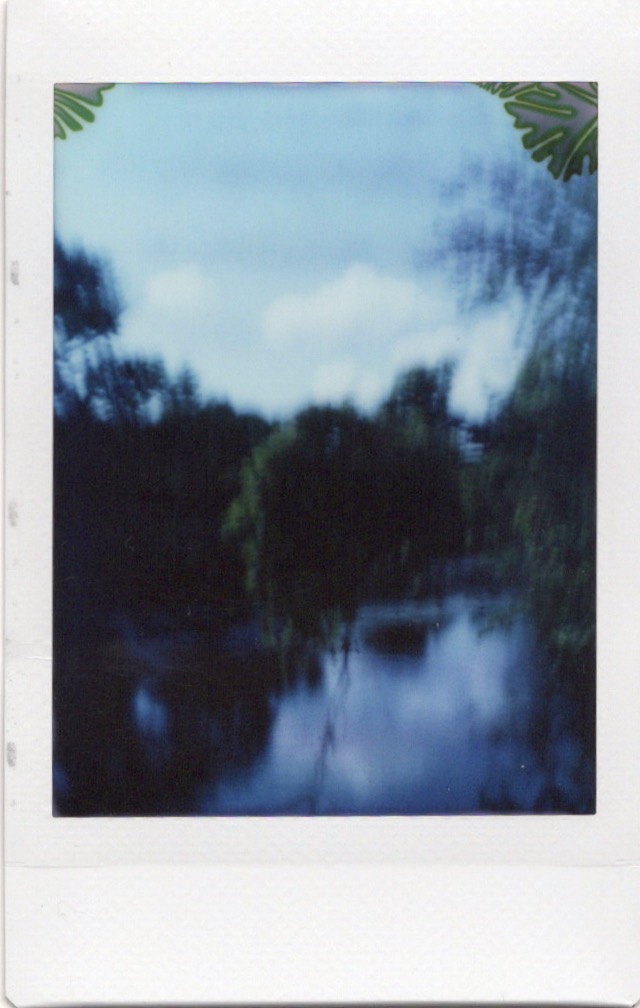
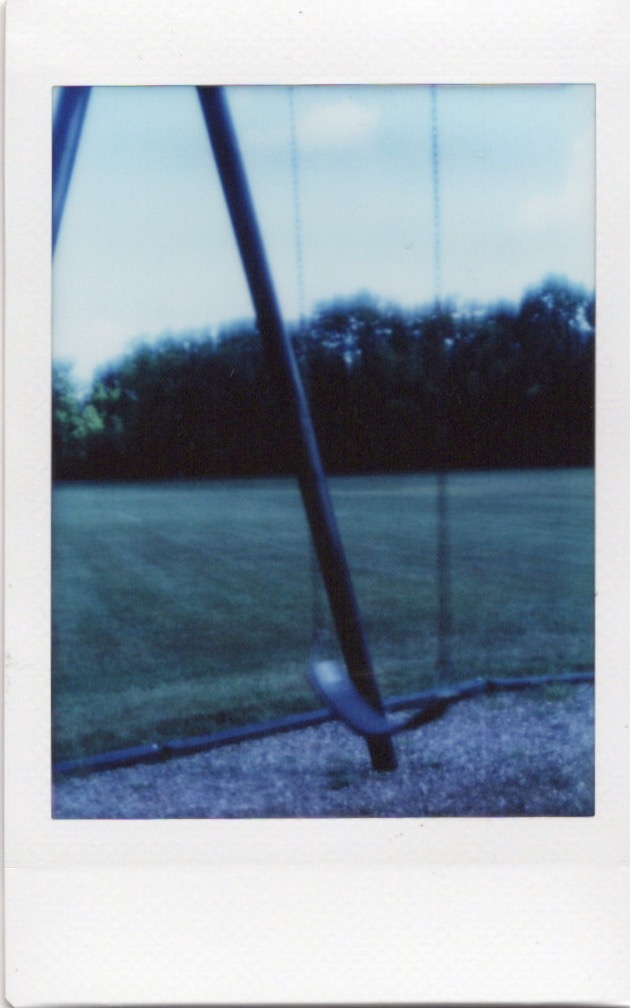
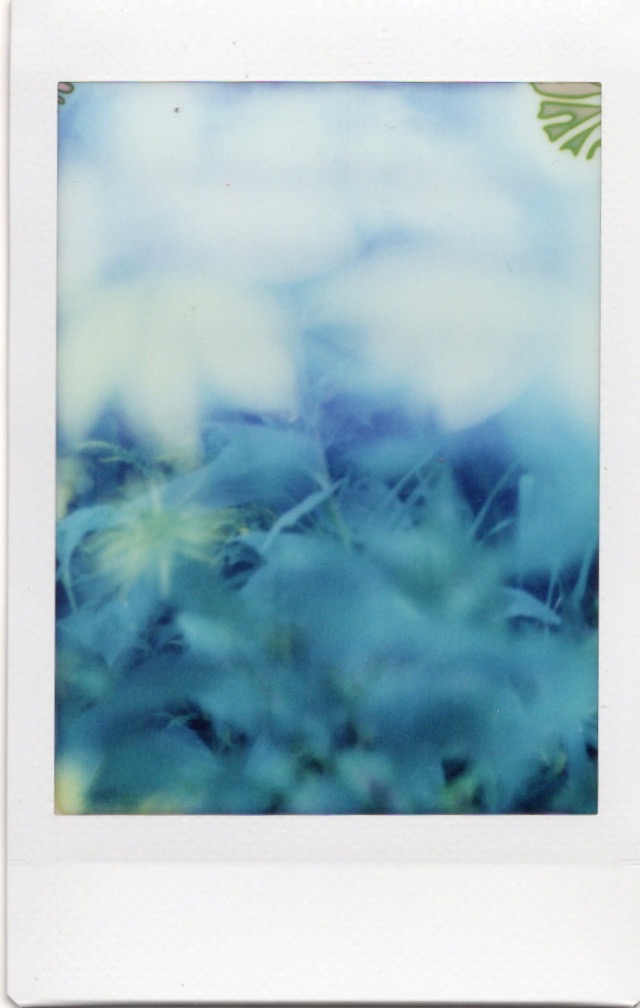
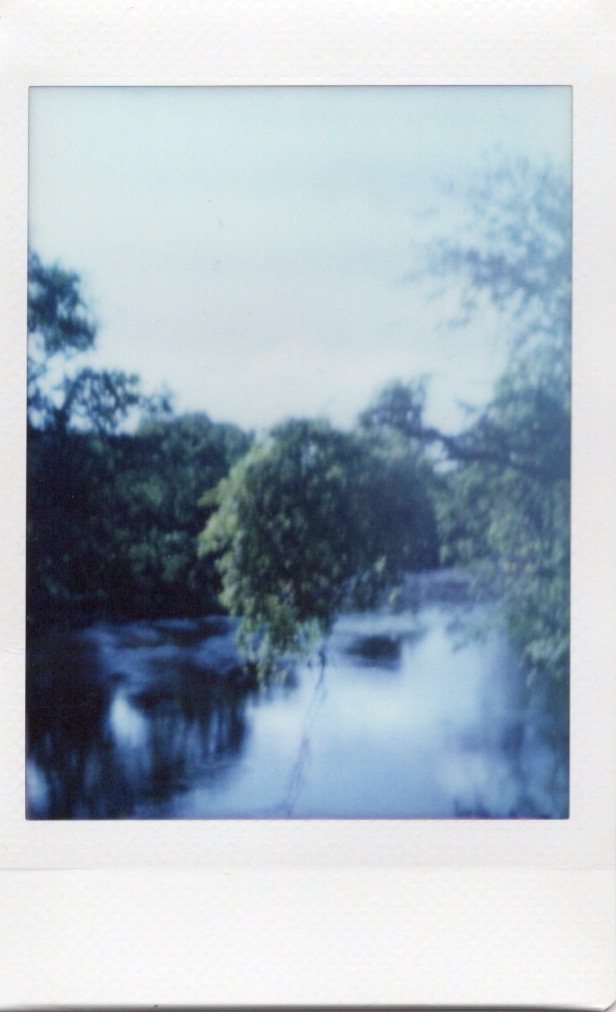
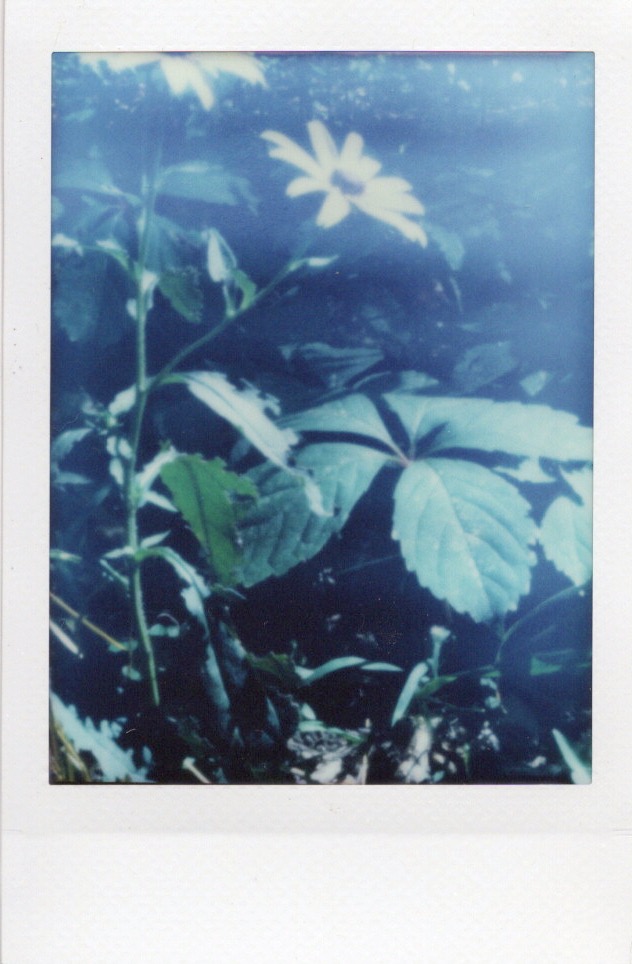
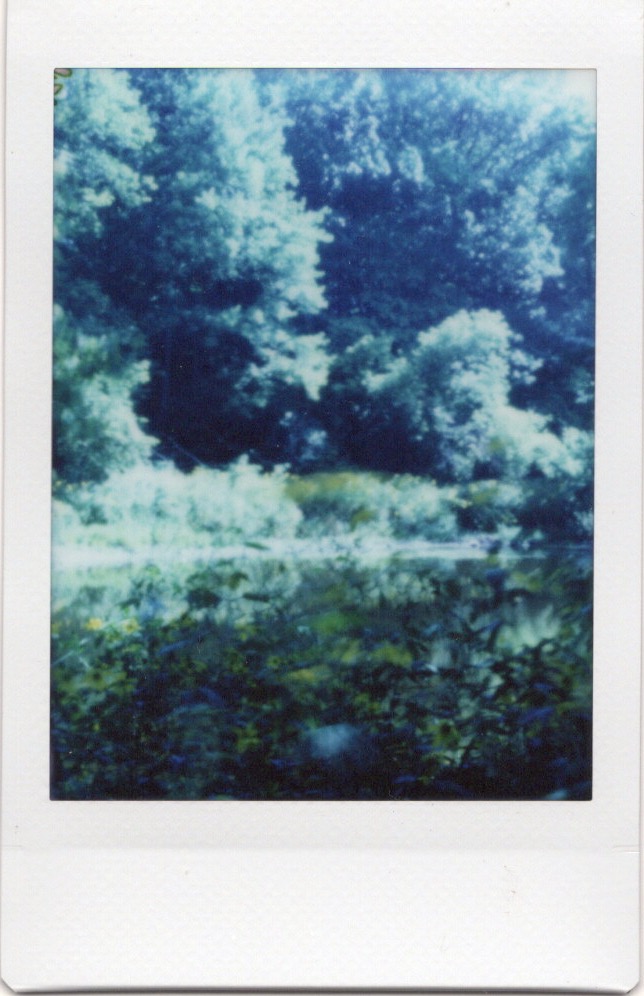
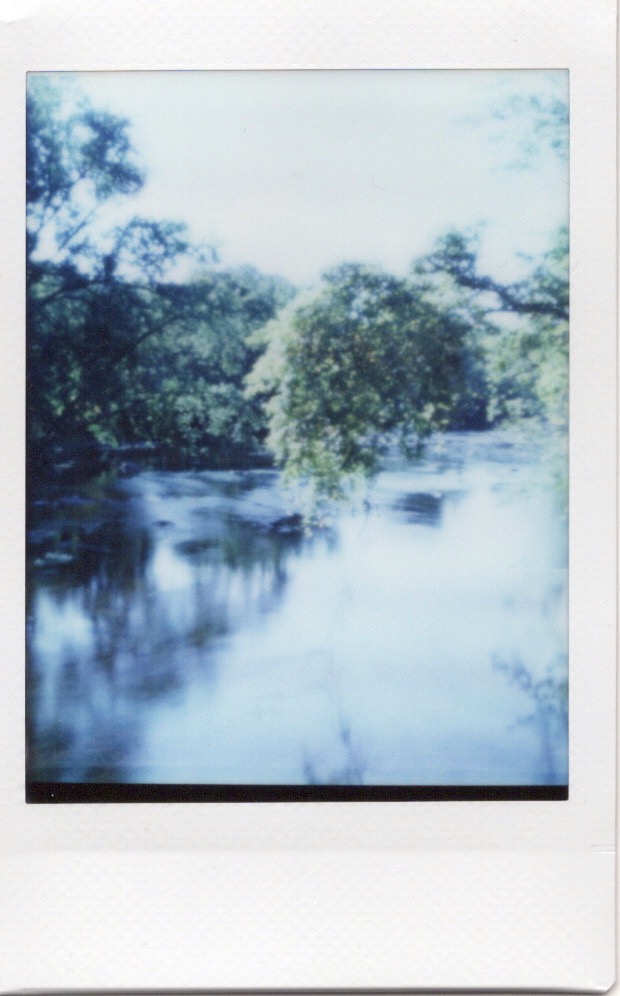
Who Should Buy It?
Buy the Jollylook Pinhole if you want to build your own beautiful wood camera with a classic design and classically imperfect images. Keep shopping if you’re annoyed by roller lines or have no impatience for experimentation.
Tech Specs
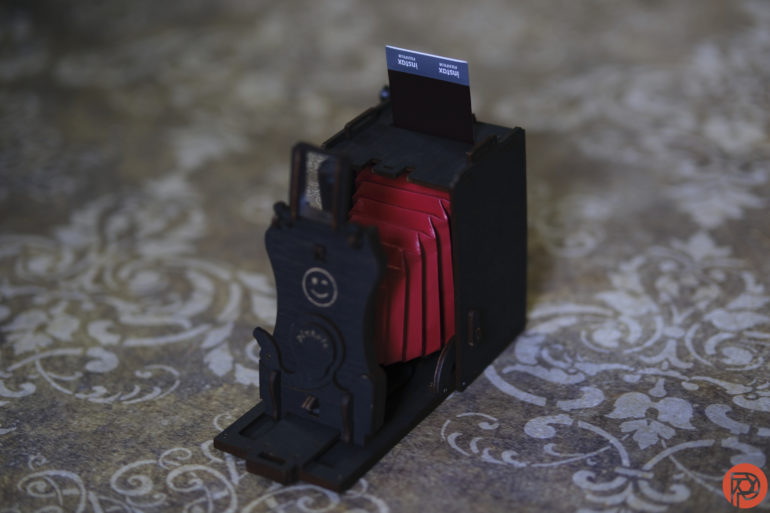
Jollylook lists the following specifications for the Pinhole:
- Dimensions folded: 5.9×3.9×3.15”
- Dimensions working position: 5.9×3.9×8.5”
- Weight: 1.1 lbs
- Material: Recyclable, biodegradable natural wood fiber
- Paint: Natural oils and waxes, renewable raw materials of plant origin
- Power supply: N/A, fully mechanical
- Film development: Manual mechanism
- Film: Fujifilm Instax Mini
- Picture size: 62 x 46mm
- Viewfinder: Fresnel lens
- Pinhole diameter: .38mm
- Focal length: From 50mm up to 110mm
- Focus: Pinhole
The Phoblographer may receive affiliate compensation for products purchased using links in this blog post.


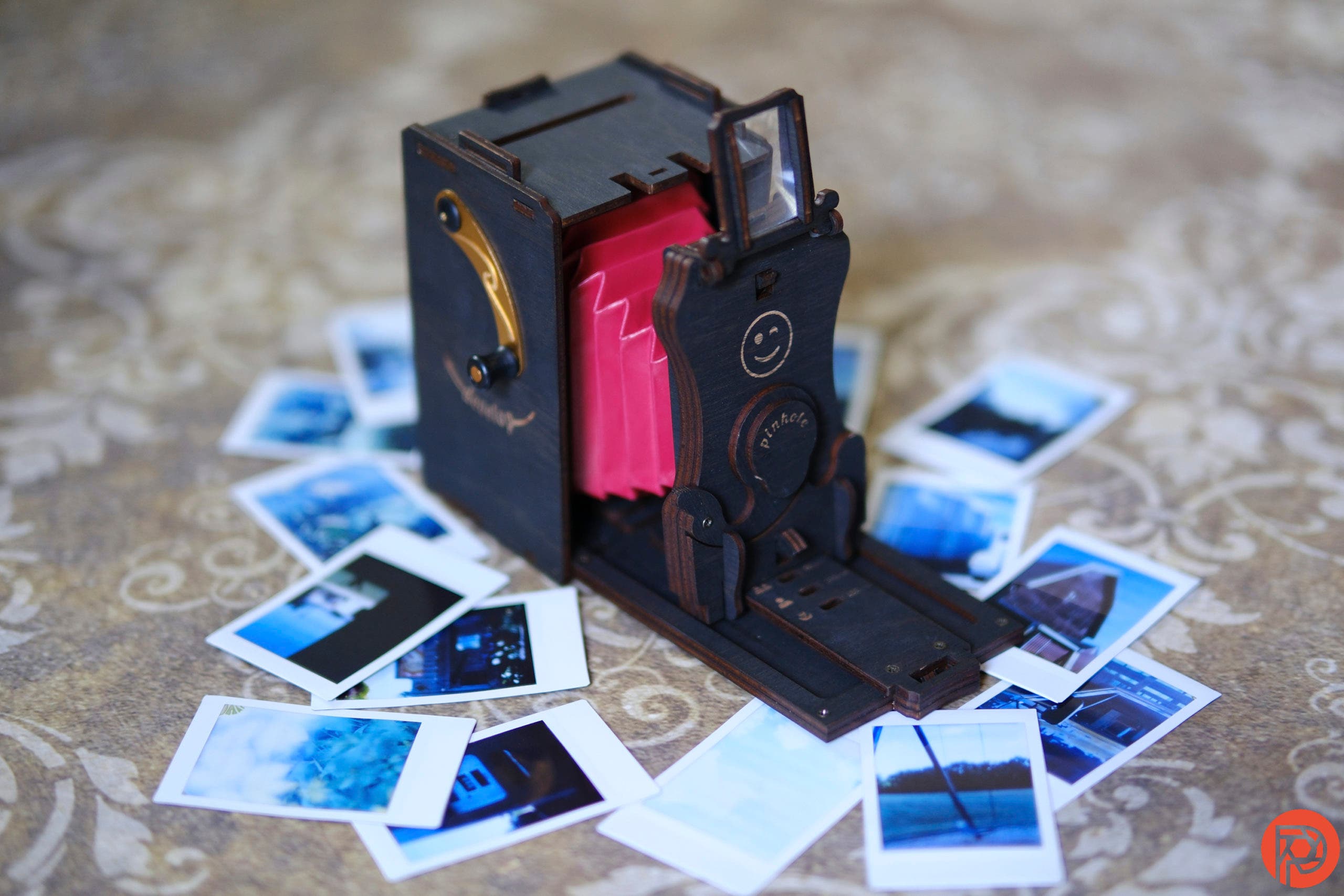
Leave a Reply